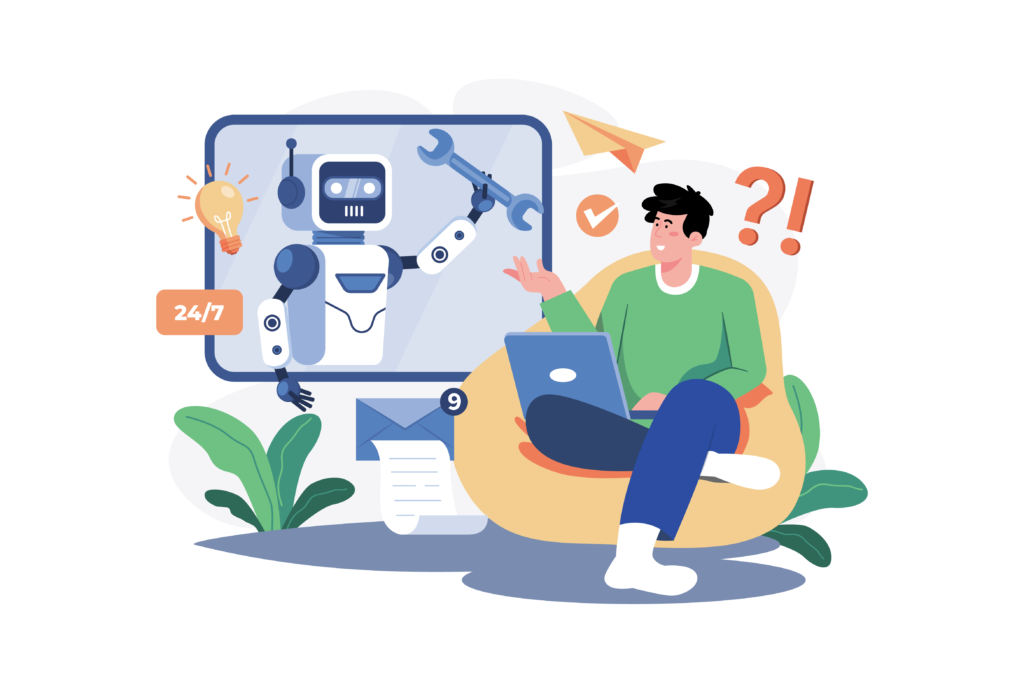One of the world’s first chatbots was created in 1966[1] called Eliza. However, it wasn’t until much later that chatbots became essential tools for consumers, businesses, and entire industries. The chatbots of the past were janky, awkward solutions that often provided more frustration than the utility. But things couldn’t be more different today. Advancements in artificial intelligence and computing power have led to a world where chatbots are commonplace.
What Can Chatbots Do Today?
We live in a world where 50% of businesses plan to spend more on chatbots than mobile apps, and 80% of people have interacted with a chatbot at some point[2][3]. Simply put, the chatbot industry is booming, and with good reason.
Today’s chatbots offer numerous benefits to businesses through 24/7 availability, improved insight into customer behaviour, and cost savings. Moreover, chatbots have many possible applications, including customer service, marketing, sales, IT service help desks, HR, and more.
Much of the reason chatbots have become so prevalent is their increasingly powerful capabilities. Or in other words, chatbots are simply more successful at meeting the varying needs of businesses in the modern world today. Two major developments here were multi-platform chatbots and conversational AI.
Multi-platform bots leverage chatbot integration features to communicate with many different products. For example, a single multi-platform chatbot can communicate with (extract data from and inject data to) different applications like Teams, Slack, Salesforce and everything in between. This capability allows companies to quickly scale the benefits of chatbots within the organisation.
And then there’s conversational AI. Conversational AI uses machine learning and natural language processing to understand and analyse language, context, and intent, thereby achieving natural-sounding two-way conversations. Context does a lot of the heavy lifting here. While traditional, older chatbots rely mostly on canned responses and respond to trigger words, conversational AI can analyse the entire conversation to provide more accurate and personalised answers.
How Chatbots Support Remote Workforces
Remote and hybrid workforces are becoming the new norm, and chatbots play a significant role in supporting this shift. For example, during the COVID-19 pandemic, many businesses found their existing processes couldn’t handle the sharp rise in employee queries concerning remote working. These struggles included connectivity, accessibility, and other IT issues.
As a result, many companies deployed AI-enabled chatbots to provide human-like support, answer simple questions, and guide users to relevant knowledge-based articles. Users could follow simple steps to solve issues like password changes, cloud support, and access the files they needed. This meant the IT team wasn’t overwhelmed with requests and could focus on higher-value work.
Chatbots can also support remote workforces in other ways. For example, they can accelerate the employee onboarding experience by answering common questions and walking workers through any specific admin tasks they need to complete. Chatbots also facilitate the exchange of information across various disparate knowledge channels in the business, breaking down silos and allowing for a more cohesive omnichannel experience.
Wrapping Up
Chatbot technology is evolving at break-neck speeds, offering companies more opportunities to enhance employee and customer experiences. Today’s chatbots are more flexible and versatile than ever, and this trend will continue as we move further into the 2020s.
[1] https://capacity.com/chatbots/evolution-of-chatbots/
[2] https://www.servicebell.com/post/chatbot-statistics
[3] https://chatfuel.com/blog/future-of-chatbots-based-on-data




